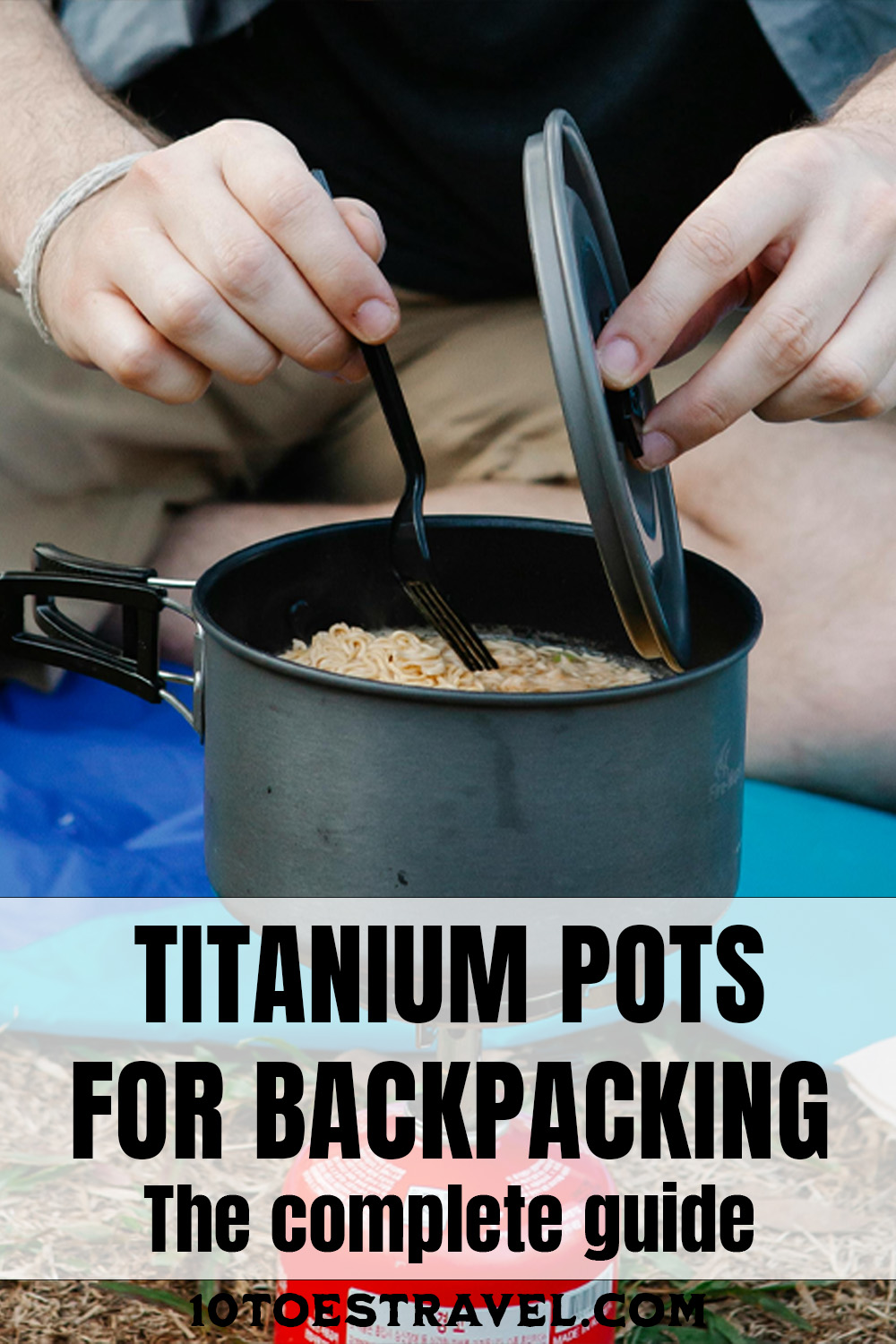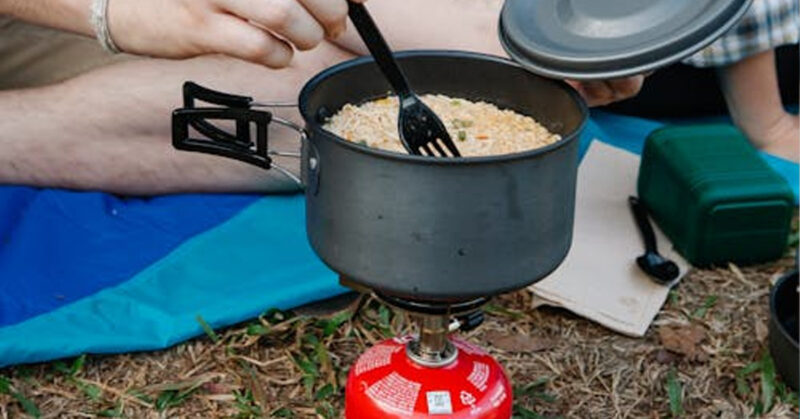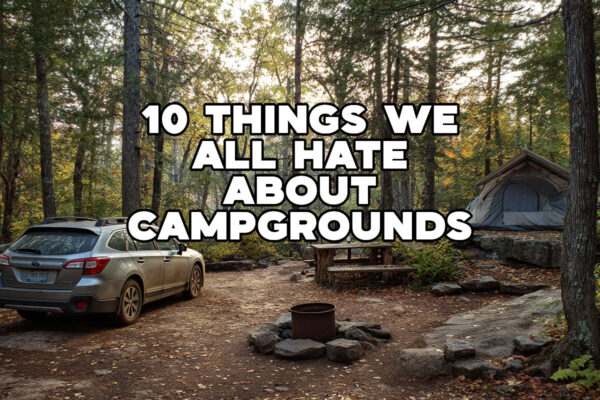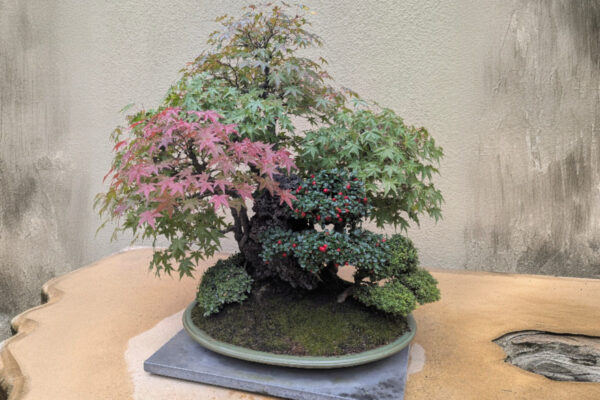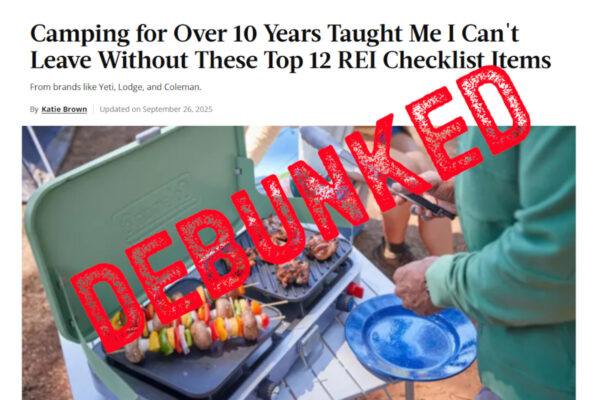Buying A Cook Pot For Backpacking
You’re standing in the camping gear aisle, staring at all the different 750ml cooking pots for backpacking. Everyone touts titanium cook pots, but do you really need one, and what is wrong with stainless steel?
Sure, they are super lightweight but are titanium pots good for cooking?
If you are debating buying a titanium cook pot for camping while you are backpacking, and thoughts like those are running through your head, this post will help clear up some of the myths about titanium cook pots and give you some tips on whether you need to buy one or not.
Why Choose Titanium Pots for Camping?
If you are a backpacker and concerned about pack weight, titanium pots are the perfect choice for camp cooking. They are 45% lighter than stainless steel, shaving off a few precious ounces on your pack weight. Not only are they lightweight, but titanium pots are also incredibly durable, able to withstand the rigors of outdoor cooking. Their durability ensures that they will last for years, making them a worthwhile investment for any camping enthusiast.
The Advantages of Titanium Over Other Materials
When it comes to choosing cookware for camping, titanium offers several advantages over other commonly used materials like stainless steel or cast iron.
- Lightweight: Titanium is known for its exceptional strength-to-weight ratio, being half the weight of steel, making it the perfect choice for backpackers and hikers who need to minimize the weight of their gear.
- Durability: Titanium is highly resistant to corrosion and withstands high temperatures, making it a durable choice for outdoor cooking.
- Non-reactive: Titanium is non-reactive with food, preventing any metallic taste or odor from affecting your meals.
Heat Resistance: Titanium vs. Stainless Steel and Aluminum
When it comes to heat resistance, titanium easily outclasses all the other options for cook pots.
Titanium has a melting point of 3,034 degrees Fahrenheit, while stainless taps out at about 2,700 degrees, and aluminum at a meager 1,220.
Why does this matter? The Butane canister stoves that most people use with these pots burn at about 2,500 degrees and the coals of a campfire can reach 1,500 degrees, so your pot needs to be heat resistant.
Yes, this does mean you can melt an aluminum cook pot on a campfire! All of them can get damaged at high heat, so you should always only put your pans (of any kind) on the heat with something in them, and probably never set them directly on the coals of a campfire if you can help it.
Titanium Pots vs Stainless Steel and Aluminum
When choosing cookware for camping, it’s important to consider the pros and cons of different materials. Here’s a comparison between titanium pots, stainless steel pots, and aluminum pots:
Titanium pots are the lightest option among the three and offer excellent durability. They are resistant to corrosion but provide poor heat distribution. Stainless steel pots are heavier slightly more durable, with better heat distribution. Aluminum is cheap and light, but not as durable even when hard anodized.
Thermolite hard anodized pot
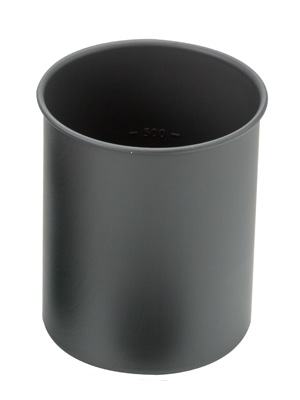
Price: $38
Weight: 3oz
Stanley Stainless Steel pot
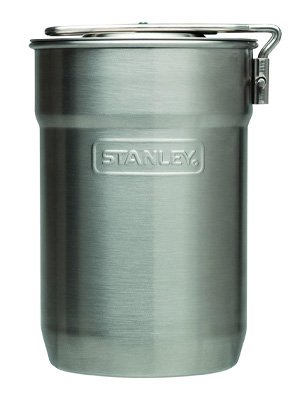
Price: $25
Weight: 8oz
Toaks Titanium cooking pot
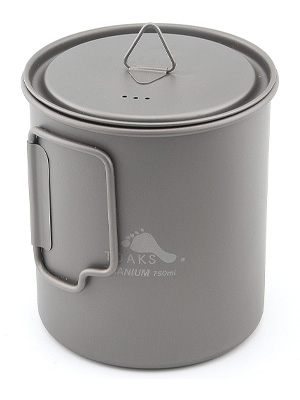
Price: $26
Weight: 4oz
Overall, titanium pots remains a popular choice for campers due to their lightweight nature and resistance to high heat, especially now that they are about the same price as stainless steel.
The Downside Of Titanium Cook Pots
Even awesome things have some downsides, and titanium pots are no different! The two points where titanium is weak are heat distribution and scratch/dent resistance.
Part of titanium’s heat resistance is its ability to transfer it very effectively. This means that the bottom of your pot will have a very hot ring where the flame of your stove touches it, and the rest will be cooler. This makes titanium pots very susceptible to scorching foods.
Titanium pots, while more corrosion-resistant than stainless steel, are not quite as durable. They are more prone to picking up scratches and getting dented when dropped.
The Standard 750ml Titanium Cook Pot For Backpacking
The 750ml size has become the standard for solo camping pots, with even dehydrated meals being sized to fit them perfectly. Brands like Snow Peak and TOAKS, not to mention a bevy of generic offer plenty of buying choices.
This size seems to be the sweet spot of being big enough to prepare a meal for one in, while at the same time functioning as a drinking mug.
Essential Features to Look for in Titanium Pots
I would love to say that when you are shopping for titanium 750ml cook pots, that there were a lot of features to differentiate one from another, but there really isn’t. It used to be that Toaks, Snow Peak, and a few others made titanium pots, but now there are knockoffs at just about any price, and all of them honestly are the same design.
From the design aspect, the only real question is if you want a bail handle on your pot or not. These can make your pot easier to pick up when you are cooking or to suspend over a fire. They do take up extra room in your pack though and can clink when you are walking.
As for what brand, I tend to shy away from the no-name brands, particularly on Amazon as I feel they are pretty dubious on quality. For the extra couple of dollars, I’ll buy an established brand that has something to loose if they send out bad cookware.
Best Practices for Using Titanium Pots in the Outdoors
Cooking with titanium pots in the outdoors requires adherence to best practices. The thin metal and high heat transmittance means some special handling.
Be Careful With Your Heat
Titanium transmits heat very easily. This means that you can very easily burn your food to the bottom of your cook pot if you turn the heat up too high, or don’t stir frequently enough.
Additionally, the handles can get very hot, so pick up your cooking pot with caution, or use a pot lifter to keep your fingers safe.
Don’t Use Metal Utensils
Titanium is not as hard as stainless steel, so you have to be a little nicer to it. Metal spoons or sporks can scratch the inside of your pot. Instead, use silicone or wooden utensils to protect the inside of your titanium pot.
Cleaning Your Titanium Pot
Cleaning with a mild detergent and soft sponge ensures longevity. Don’t use sand, scouring powder, or other abrasives on your titanium pot.
Can Titanium Pots Be Used on Any Heat Source?
Titanium pots are versatile and compatible with various heat sources, including campfires, gas stoves, and portable burners.
You should use caution with cooking with them over fires or coals, as the entire pot will get extremely hot. If you plan on cooking over a fire, I suggest you get one with a bail so you can hang it. An easy way to do this is with a tripod plate (Amazon link) that turns 3 sticks into your tripod.

Tips For Cooking with Titanium Cookware
Cooking with a titanium pot when you are out backpacking is an experience and there are a few things you need to keep in mind before you embark on a camping trip with one.
Can I Cook Anything in a Titanium Pot?
Technically yes, you can cook just about anything in a titanium pot, but not everything is suited for cooking in one. It is suggested that you don’t cook high-acid foods like tomato sauce in them as the acid can react with the metal, but I find it highly unlikely you are going to be slow-cooking spaghetti sauce in yours.
Cream sauces and starchy foods are prone to burning in these pots. Because they transmit heat so well, there is a very hot ring in the bottom of the pot. This means that foods coming in contact with that ring will tend to burn, so you need to stir frequently to prevent scorching.
The Best Thing To Cook In A Titanium Pot
Hands down, the best thing you can cook in your pot is… water. Water is the one thing that you will have a hard time burning over the intense flame of your cook stove. That water can then be added to a prepared meal and left to cook in a coozie.
This will completely prevent the issue of trying to get burnt food off the bottom of your pot.
Are Titanium Pots Safe For Cooking In?
Titanium pots are safe for cooking, and they’re a popular choice because they don’t have the health risks linked to nonstick pots coated with PTFE. Since titanium cookware is PTFE-free, you don’t have to worry about chemicals getting into your food if it’s overheated.
Overall, using titanium pots can give you peace of mind about your health and safety while you cook.
Should You Get A Titanium Cook Pot?
For solo camping, the decision to get a stainless steel cook pot or a titanium one has never been harder.
Not too long ago, price was a major factor in which you chose, as titanium pots were at least half again as expensive as stainless steel. Now that has changed and they are pretty comparable in price, at least for the most part.
For me that just leaves weight and durability as the deciding factors.
Stainless steel will be a couple ounces heavier, but will be more durable and put up with more abuse than titanium. Titanium will be lighter, but you have to be a little nicer to it.
Does a couple ounces of weight in your pack matter to you? Would you rather have durability or a couple less ounces in your pack. That is really the decision you have to make.
In either case, a pot from a reputable company, well cared for, will last many seasons out on the trail.
